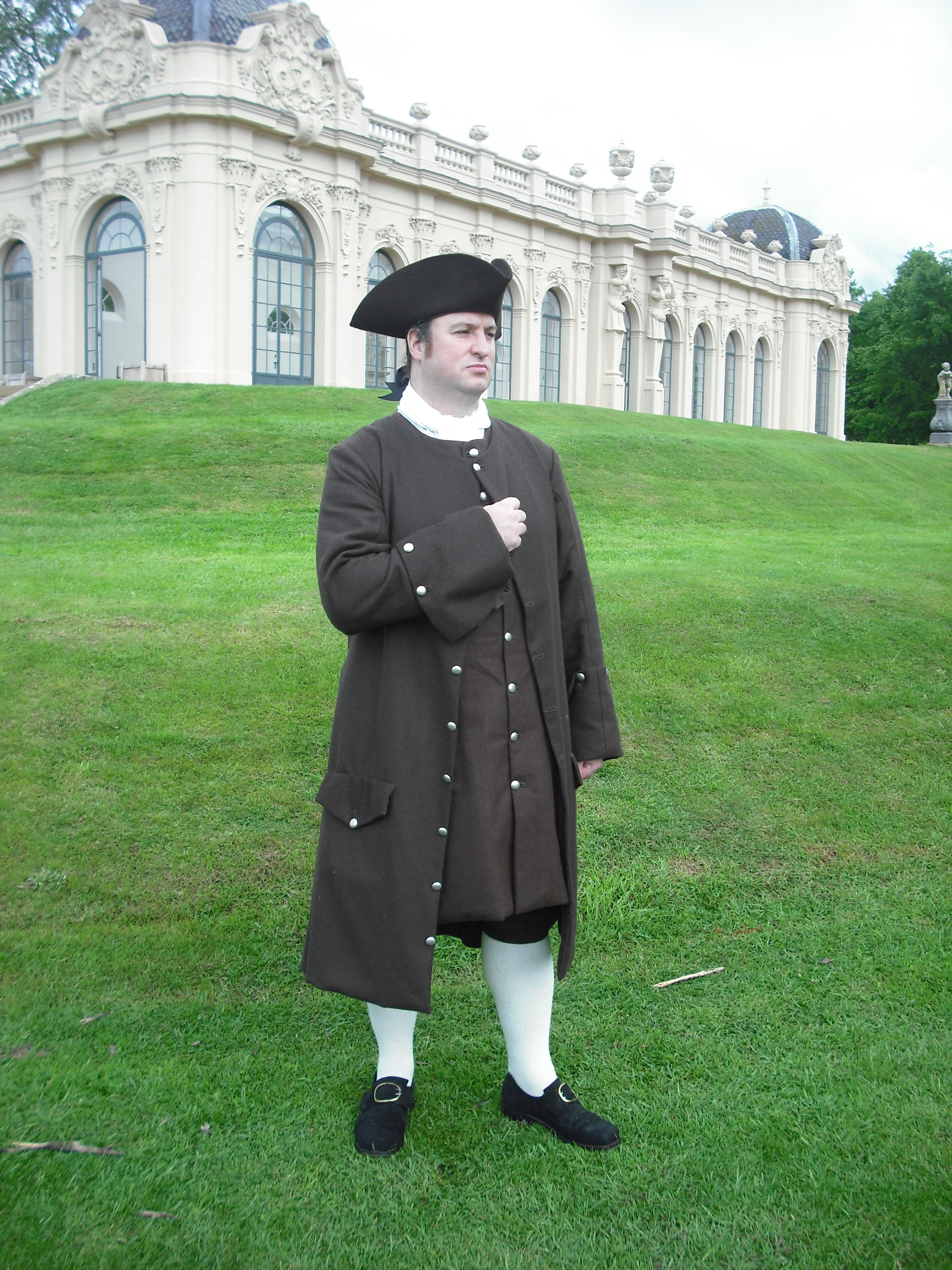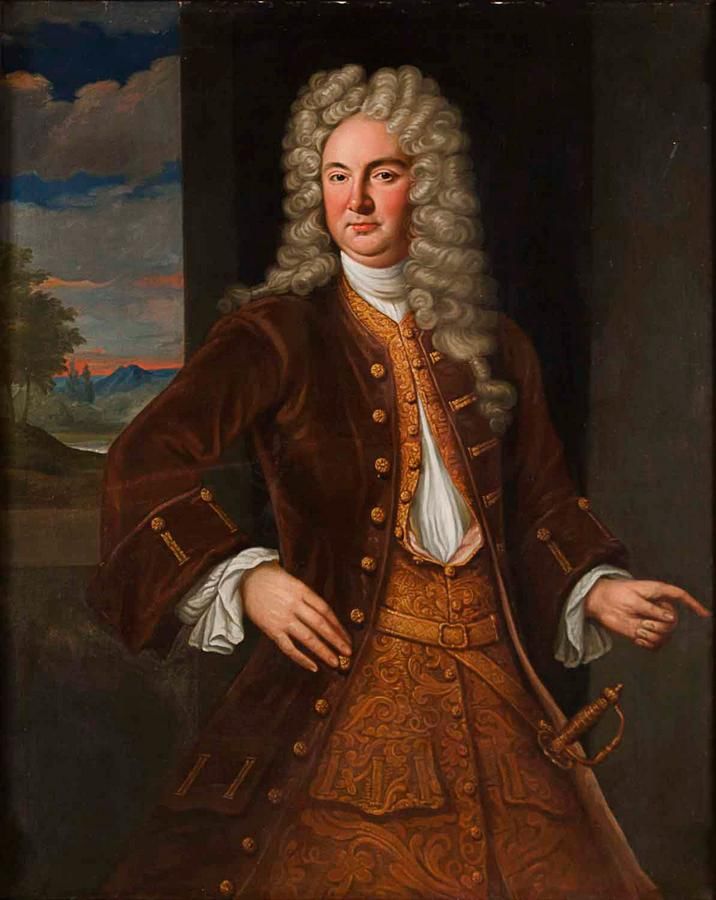
Sold Price British School, 18th Century, Portrait of a Gentleman in a Blue Jacket, Oil on
II. The scholarly stereotype of the eighteenth-century 'polite gentleman' can be traced as far back as the early twentieth century. Virgil B. Heltzel's doctoral thesis at the University of Chicago in 1925, for example, analysed the letters of the fourth earl of Chesterfield with a view to understanding his - and more broadly an eighteenth-century - concept of an 'ideal gentleman'.

(c 1790) Hugh Douglas Hamilton Portrait of a Young Gentleman in Rome 18th century fashion
Eighteenth-century gentlemen, including naval officers, often wore their seals as fashionable items of jewellery, usually hanging them from a ribbon or chain at their hip.. Agate and pinchbeck, 18th century, 40 x 22 x 29mm, National Maritime Museum, JEW0110. This seal is made from pinchbeck (an alloy of zinc and copper used as a cheap.

British School, 18th Century Portrait of a Gentleman with Flintlock Gun, After the Hunt, Three
The eighteenth-century Gentleman's House: Five Favorites. April 7, 2016. Royal Oak member, Stephen Hague has shared with us his favorite British 'gentlemen houses.'. An expert on the topic, Dr. Hague teaches a wide range of courses in Modern European history, with a special interest in Britain and the British Empire in a global.

Portrait Of A Gentleman, 18th Century Work. Portrait Colorful portrait, Portrait, 18th century
Typical dress for the 18th-century gentleman was a three-piece suit, which consisted of breeches and a dress-coat worn over a sleeveless waist-coat or vest. With their sequins, tassels and glitzy.

Pin on Portrait — Gentleman 18th century
gentleman, in English history, a man entitled to bear arms but not included in the nobility.In its original and strict sense the term denoted a man of good family, deriving from the Latin word gentilis and invariably translated in English-Latin documents as generosus.. For most of the Middle Ages, when the basic social distinction was between nobiles (the tenants in chivalry, whether earls.

Sir Nathaniel DanceHolland RA Portrait of a Gentleman Portrait, Male portrait, 18th
There were however three areas of the life of the 17th- and 18th-century gentleman where the idea of fairness was widely considered relevant: fox-hunting, horse-racing, and duelling. We will look at each of these in turn with a view to considering whether they add up to anything like a distinctive aristocratic tradition of fair play.

18th century portraits, Portrait, Gentleman
The most successful French general of the mid-18th century, Maurice de Saxe (1696-1750), was an illegitimate son of Frederick Augustus I, Elector of Saxony. Maurice began his military career at age 12 in the army of none other than Prince Eugene, fighting the French in 1709 at Tournai, Mons and Malplaquet.

18th Century Portrait Of A Gentleman 698339 Sellingantiques.co.uk
In United Kingdom: Economy and society.the population: the landed country gentlemen and their socially inferior cousins, the merchants and lawyers. By 1500 the essential economic basis for the landed country gentleman's future political and social ascendancy was being formed: the 15th-century knight of the shire was changing from a desperate and irresponsible land proprietor, ready…

Lot 18th Century Portrait Of Gentleman
18th century men's attire was the habit à la française, which consisted of a jacket, breeches and a vest. This costume varied in material and design according to the social status of its owner. Up until the middle of the century the jacket, called justeaucorps, was worked to be collarless and cling down to the waist.

Frock Coats at Cloak’d and Dagger’d
Let us turn to our 19th-century forebears for some lessons on courtesy from the Gentleman's Book of Etiquette and Manual of Politeness, by Cecil B. Hartley, 1860. The Victorians loved to call on history for their inspiration, and so too can we—there is much to learn from them. Here are 10 simple rules that 19th-century gentlemen lived by. 1.

Lot English School, (18th century), Portrait of a gentleman in blue jacket, oil on canvas, 30
The Life and Opinions of Tristram Shandy, Gentleman, also known as Tristram Shandy,. Sterne's widely publicised 27 July 1766 response to Sancho's letter became an integral part of 18th-century abolitionist literature. There is a strange coincidence, Sancho, in the little events (as well as in the great ones) of this world: for I had been.
.jpg)
English School, early 18th Century , Portrait of a gentleman, halflength, in a blue coat and
GENTLEMAN. GENTLEMAN. The word "gentle" is derived from the Latin word gentilis, an adjective meaning 'of or belonging to the same clan, stock, or race'. Throughout the early modern era noble birth would largely define the gentleman, but the ideal of gentlemanly behavior changed dramatically from the sixteenth through the eighteenth centuries.

Pin by Niels on Historic costume Portrait, Portrait painting, 18th century paintings
A gentleman ( Old French: gentilz hom, gentle + man; abbreviated gent.) is any man of good and courteous conduct. [1] Originally, gentleman was the lowest rank of the landed gentry of England, ranking below an esquire and above a yeoman; by definition, the rank of gentleman comprised the younger sons of the younger sons of peers, and the.

Portrait of a Man Hudson, Thomas Google Cultural Institute Portrait, 18th century costume
Thus, based on Steele's idea of gentlemanly behavior, one eighteenth century writer, John Trusler, provided principle of politeness based on 35 tips for the Georgian gentleman. I have summarized these 35 points in the following list: Honor the dinner table and your guests by carving meat well. Pay attention to your behavior at the dinner.

Pin di Magaly Mare su Autrefois!!! Storia della moda, Moda, Arte
Gentlemen's Fashion in the 18th Century. Though clothing for an 18 th century gentleman was less cumbersome than it was for women, getting dressed was more complicated than slipping on slacks and a dress shirt. Like their female counterparts, 18 th century men didn't bother much with basic undergarments. Though underbreeches existed, most.

Curled Wig Gentleman Oil Paintings and Acrylics Art
Nobles and gentlemen. Between persistent poverty and the prevailing aristocratic spirit several connections can be made. The strong appeal of noble status and values was a force working generally against the pursuit of wealth and the investment that was to lead, precociously and exceptionally in Britain, to the Industrial Revolution.In France a nobleman could lose rank (dérogeance) by working.